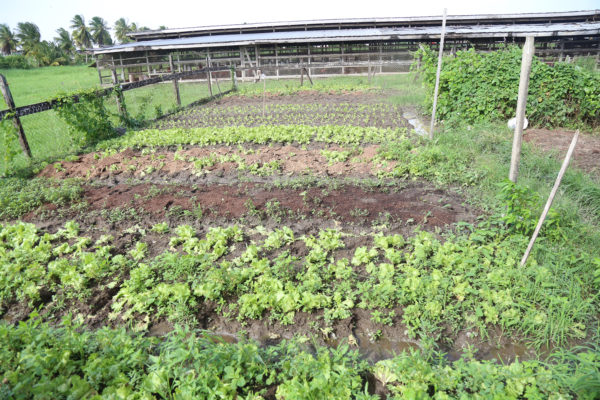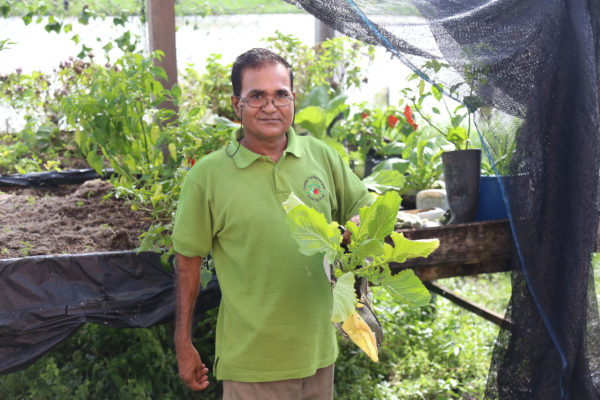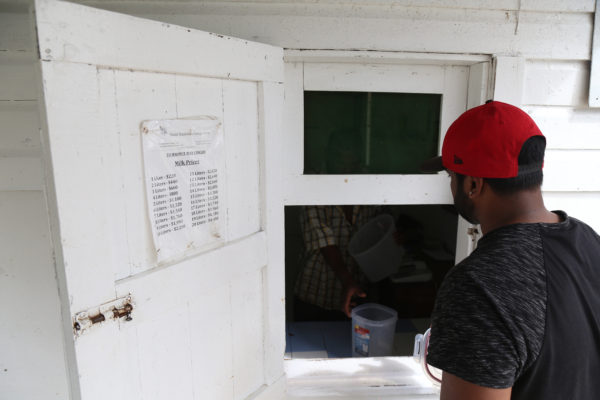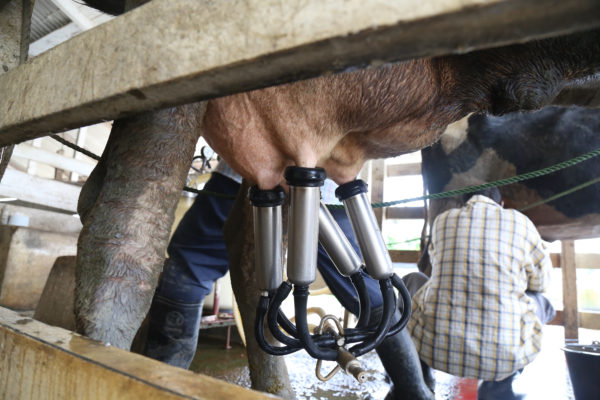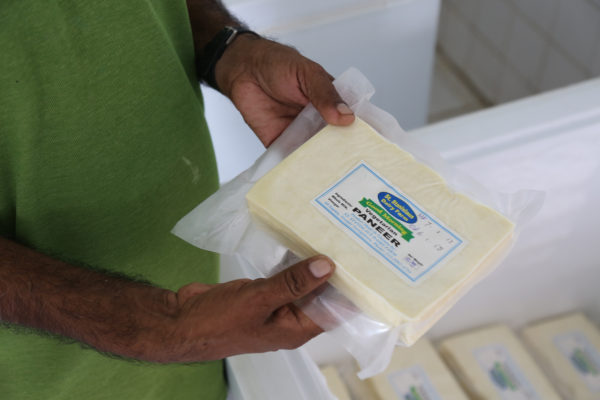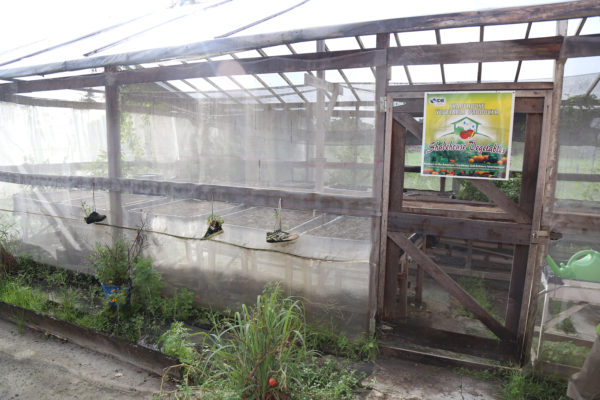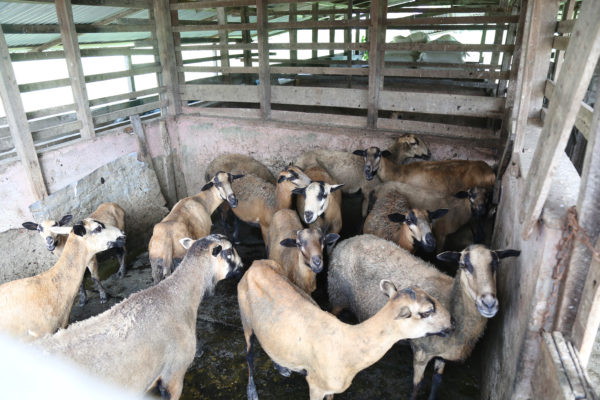The St Stanislaus farm, established 41 years ago to be a live laboratory for students of St Stanislaus College to engage in and observe agricultural practices, has since grown to become a leader in the promotion of farming technology and agricultural sciences as well as a self-sustaining operation.
The intention, initially, had been to move the school to the 17-acre plot of land located in North Sophia, leaving behind the congestion that the city brought. However, when in 1975, then president Forbes Burnham made the decision to introduce agriculture into schools, the St Stanislaus farm was born.
Chairman of the St Stanislaus College Association and the St Stanislaus Farm Committee Chris Fernandes explained that the farm’s establishment came on the heels of Burnham’s identification of agriculture as one of the pillars on which Guyana’s economy would be built. This prompted headmaster of the school at that time, Fr Kenneth Khan, to have the farm established.
The St Stanislaus farm, owned by the St Stanislaus Alumni Association, opened in September 1975 as a mixed-use farm, equipped with a laboratory for students’ use. Poultry, cash crops, a few sheep and three cows were among the farm’s initial inventory. The goal then, and ever since, has been to educate students, farmers and technicians and to transfer the use of technology, but as of recent, the focus has changed to ecotourism, and providing visitors with an opportunity to “tour a diversified, multi-enterprise farm.”
Open to the public, the farm can be accessed for lectures and practical sessions on general agriculture, crops and livestock, and is the source of agricultural science material for students from a range of institutions, including the Guyana School of Agriculture. What is not available at the farm, can likely be researched using video footage available there.
The hydroponics unit was first set up in 2005 and is used to facilitate training exercises, such as ‘The Shadehouse Project,’ which was recently completed in collaboration with the Partners of the Americas and Caribbean Self-Reliance International (CASRI), a Canadian non-profit.
Although it was originally intended that the farm’s operations be overseen by students, a few years after being established, the ministry could no longer afford to transport the students to and fro and so labour was hired.
Operations
The operations at the farm range from hydroponics, composting, biofuel production and poultry and sheep rearing, to the profitable dairy farming and milk processing.
The farm has been practicing hydroponics farming—a method of farming in which plants are grown without the use of soil—since 2005, following the great flood of the same year.
Lettuce is the only crop currently being grown commercially, and that is used to supply the Bounty supermarket chain.
A small unit of sheep, 15 in number, are reared for teaching purposes.
Broiler chickens are grown on contract for the Bounty supermarkets; Bounty supplies the chicks and feed. The chickens, reared in batches of 13,000 on average six times a year, are raised until six or seven weeks old before being resold.
Compost, made from decomposed material and used to fertilise soil, is produced from a combination of chicken manure, molasses and weeded grass and sold at a price of $1,000 for 50 pounds.
The farm has led the way in biogas production, having had the country’s first bio digester. With that technology, two houses in the compound were powered by cow manure. However, issues with the management and maintenance of the technology eventually led to its disuse.
The fish pond, which once was home to the farm’s fish and ducks, is not operational at present, which is as a result of challenges encountered with acquiring feed.
Dairy unit
Mahadeo Mansaram, who has been the farm manager for the past 31 years, related that the farm’s dairy unit was set up in 1984 after the Inter-American Institute for Cooperation on Agriculture (IICA) was approached to assist with its revitalisation. As a result, 11½ acres of antelope grass were planted. The pasture is divided into 28 sections, with the sections separated using electric wiring. A rotational grazing system is utilised, where the cattle graze in a different section every day. This system is thought to eliminate parasites and maximise the amount of protein in the field.
Mansaram explained that the calves are sold at five days old for breeding stock and four or five heifer calves are kept per year for replacement stock. That means that every five years, a new herd is created.
Milk processing plant
Every day, approximately 45 gallons of milk is produced. Some of it is sold to the Georgetown Public Hospital and some to contractors from the east coast, east bank and Georgetown. Now, according to Fernandes, most of the fresh milk is sold. However, Mansaram had related that there was a time when milk would be left to waste. One of the solutions to reducing the excess had been to bring in a middleman. The other? Making paneer.
Paneer, known as cottage cheese, is a vegetarian, non-melting cheese, high in protein. At the farm, paneer is produced from whatever milk is leftover after a day’s sales.
“Presently now, we’re producing about 45 gallons of milk a day and believe me… if ordinary people come in, we can’t sell 10 gallons of fresh milk per day.
So, we was dumping milk, we was sending milk to the orphanage and all kind of thing, until I decide to go and make paneer,” Mansaram said.
At one point, the farm was producing 38 pasteurised milk products, including mozzarella cheese, cream cheese, cheddar cheese, cheese dips, yogurts, eggnog and non-fat and full cream pasteurized milk. Now, paneer is the only such product being produced by the farm.
Having been unable to produce enough milk to facilitate the production of those items, they tried to source milk from farmers in Mahaica and Mahaicony. The quality of milk being supplied, however, proved to be poor, and so the collaboration was discontinued.
Another factor that contributed to the cut in the supply of these products, was the issue of keeping the products properly refrigerated, as changes to the temperature would lead to spoilage.
“The next challenge was when you finish mek the product and take it to the supermarket, because it’s pasteurized, it needs to be in a temperature [that is] cool all the time. And most people, for security reasons, because of the blackout…when you take off the coolers in the night and then go back and put it on in the morning it changes and when the bacteria changes, the milk spoils. It wouldn’t have the shelf life you would have wanted,” Mansaram said.
The challenge with selling paneer at the beginning, Mansaram explained, was that the farm did not know how the product would be received by the Guyanese public given that it is a vegetarian product and, also, is only usually used by Hindus on special occasions.
“In the beginning, we used to have it by 500 to 600 packs always on reserve because people didn’t know what was it and now the people sensitised and know what is it now and the people are thinking about their health and so, we can’t supply. The demand is more than what we can supply… I have 2 big freezers that hold 2,000 I only have 21 inside.”
The products, sold under the label “Good Morning,” can be found in N&S Mattai, Survival and all the Bounty supermarket locations in Georgetown.

